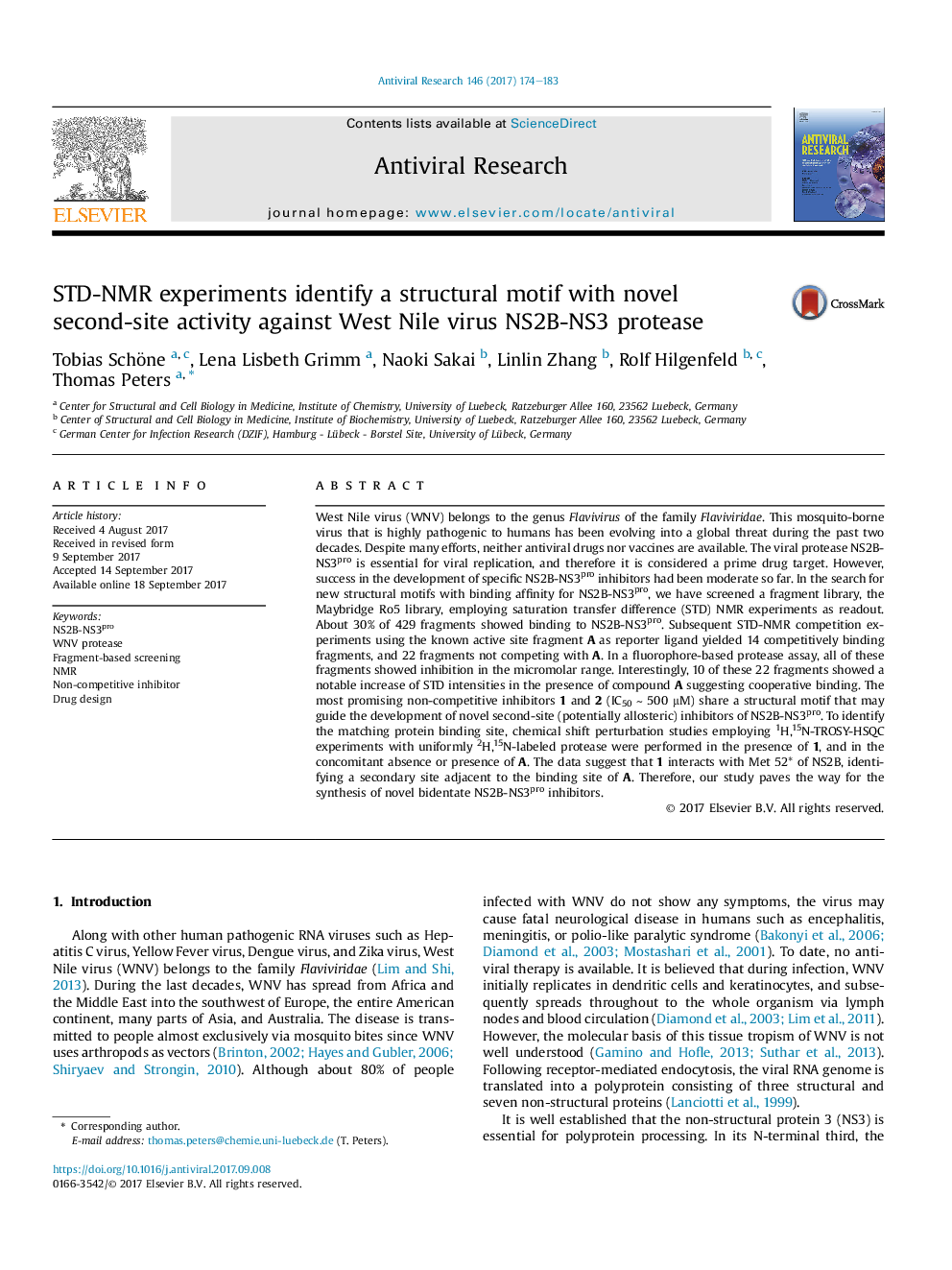| Article ID | Journal | Published Year | Pages | File Type |
|---|---|---|---|---|
| 5551686 | Antiviral Research | 2017 | 10 Pages |
â¢STD-NMR screening of a fragment library for NS2bNS3 protease inhibitors delivered hits.â¢Second site binders were identified employing competition STD NMR experiments and fluorogenic protease assays.â¢Binding sites for second site binders are suggested based on chemical shift perturbations and docking.
West Nile virus (WNV) belongs to the genus Flavivirus of the family Flaviviridae. This mosquito-borne virus that is highly pathogenic to humans has been evolving into a global threat during the past two decades. Despite many efforts, neither antiviral drugs nor vaccines are available. The viral protease NS2B-NS3pro is essential for viral replication, and therefore it is considered a prime drug target. However, success in the development of specific NS2B-NS3pro inhibitors had been moderate so far. In the search for new structural motifs with binding affinity for NS2B-NS3pro, we have screened a fragment library, the Maybridge Ro5 library, employing saturation transfer difference (STD) NMR experiments as readout. About 30% of 429 fragments showed binding to NS2B-NS3pro. Subsequent STD-NMR competition experiments using the known active site fragment A as reporter ligand yielded 14 competitively binding fragments, and 22 fragments not competing with A. In a fluorophore-based protease assay, all of these fragments showed inhibition in the micromolar range. Interestingly, 10 of these 22 fragments showed a notable increase of STD intensities in the presence of compound A suggesting cooperative binding. The most promising non-competitive inhibitors 1 and 2 (IC50 ⼠500 μM) share a structural motif that may guide the development of novel second-site (potentially allosteric) inhibitors of NS2B-NS3pro. To identify the matching protein binding site, chemical shift perturbation studies employing 1H,15N-TROSY-HSQC experiments with uniformly 2H,15N-labeled protease were performed in the presence of 1, and in the concomitant absence or presence of A. The data suggest that 1 interacts with Met 52* of NS2B, identifying a secondary site adjacent to the binding site of A. Therefore, our study paves the way for the synthesis of novel bidentate NS2B-NS3pro inhibitors.
